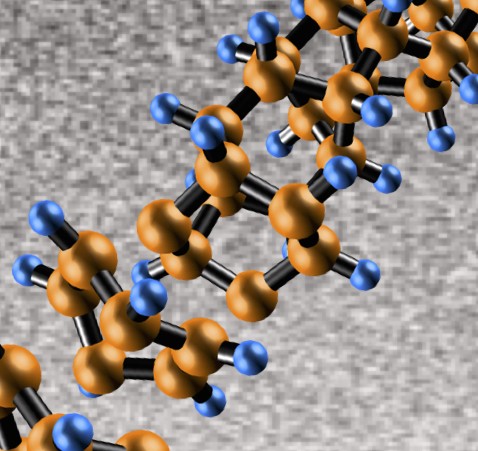Diamond Nanothread Will Help Build 'Space Elevators'
| Ana Verayo | | Sep 25, 2014 09:08 AM EDT |
(Photo : Enshi Xu, Vincent Crespi lab, Penn State University) The core of the nanothreads is a long, thin strand of carbon atoms arranged just like the fundamental unit of a diamond's structure -- zig-zag "cyclohexane" rings of six carbon atoms bound together, in which each carbon is surrounded by others in the strong triangular-pyramid shape of a tetrahedron
Scientists were inspired by the intrinsic quality of diamonds that they developed a unique material that will be probably used for "space elevators" that will hopefully transport astronauts to space stations instead via spacecraft according to a study published in the journal, Nature Materials.
Like Us on Facebook
According to John Badding and his team from Penn State University, they have devised a method where they can produce ultra-thin diamond nanothreads that possess incredible properties similar to diamonds such as remarkable strength and stiffness and signifcantly surpasses current polymers and nanotubes used today.
There were failed attempts that did not successfully compress carbon molecules to transform it into nanomaterial similar to diamonds, but Badding's team finally figured it out this time. The method consists of a process that slowly releases pressure and allows benzene to produce carbon atoms that form a tetrahedral configuration similar to a diamond.
Badding says that these nanothreads possess such incredible strength and stiffness that sp2 carbon nanotubes and other commercial high-strength polymers pale in comparison.
According to Malcolm Guthrie, co-author of the study from the Carnegie Institution for Science, they used Oak Ridge National Laboratory's Paris-Edinburgh device and applied an immense amount of pressure to compressed a 6 millimeter wide benzene in order to simulate the diamond-like quality of this nanomaterial.
They key to forming this nanomaterial was the right amount of pressure at normal room tempreature that allowed carbon atoms to react and form these carbon tetrahedrons and create diamond-core nanothreads, says Guthrie.
Apart from being extremely stiff and strong, this material is also exceptionally lightweight.
But Badding and his team prefers to shy away from commercial application, as they want to be involved with protecting the Earth's atmosphere and transportation that will hopefully include "space elevators" in the near future.
TagsDiamond Nanothread Will Help Build "Space Elevators", diamonds, nanothread, diamond nanothread, space elevators
©2015 Chinatopix All rights reserved. Do not reproduce without permission
EDITOR'S PICKS
-

Did the Trump administration just announce plans for a trade war with ‘hostile’ China and Russia?
-

US Senate passes Taiwan travel bill slammed by China
-

As Yan Sihong’s family grieves, here are other Chinese students who went missing abroad. Some have never been found
-

Beijing blasts Western critics who ‘smear China’ with the term sharp power
-

China Envoy Seeks to Defuse Tensions With U.S. as a Trade War Brews
-

Singapore's Deputy PM Provides Bitcoin Vote of Confidence Amid China's Blanket Bans
-

China warns investors over risks in overseas virtual currency trading
-

Chinese government most trustworthy: survey
-

Kashima Antlers On Course For Back-To-Back Titles
MOST POPULAR
LATEST NEWS
Zhou Yongkang: China's Former Security Chief Sentenced to Life in Prison

China's former Chief of the Ministry of Public Security, Zhou Yongkang, has been given a life sentence after he was found guilty of abusing his office, bribery and deliberately ... Full Article
TRENDING STORY

China Pork Prices Expected to Stabilize As The Supplies Recover

Elephone P9000 Smartphone is now on Sale on Amazon India

There's a Big Chance Cliffhangers Won't Still Be Resolved When Grey's Anatomy Season 13 Returns

Supreme Court Ruled on Samsung vs Apple Dispute for Patent Infringement

Microsoft Surface Pro 5 Rumors and Release Date: What is the Latest?










